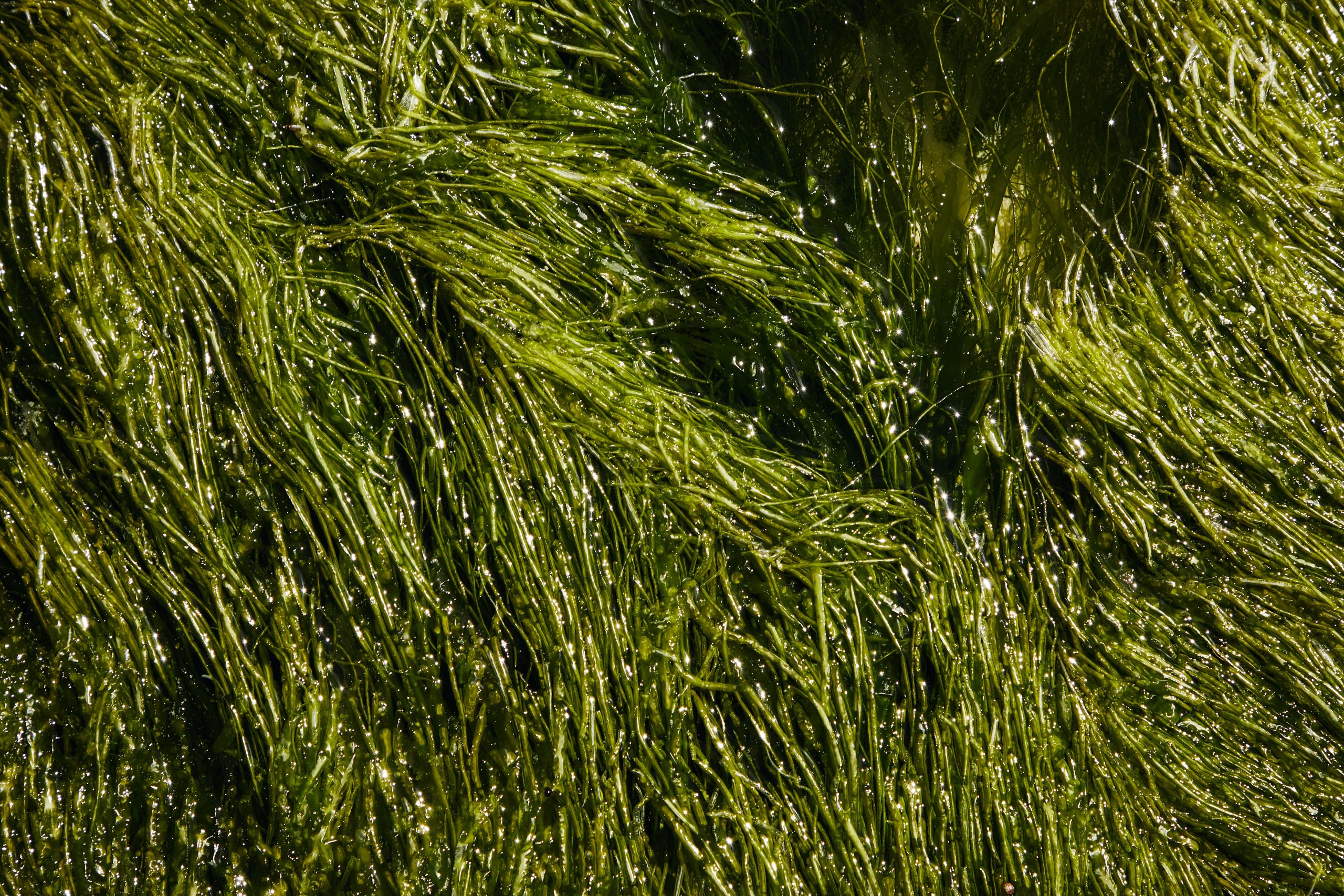
Introduction to Green Algae and Their Significance
You’ve probably seen green algae before, whether in a pond, an aquarium, or even in your favorite smoothie, but have you ever considered how vital green algae will be for humans in the future? Algae, often called lower plants, are a diverse group of organisms that play an essential role in the world’s ecosystems. Discover the diverse world of algae, their ecological importance, and how important green algae will be for humans in the future.
Green Algae Facts: Green algae are unique in many ways. They can be unicellular or multicellular, and their cell structure can be simple or complex. These organisms are autotrophs, meaning they can produce their food through photosynthesis. Some species are also capable of heterotrophy, consuming other organisms to obtain nutrients.
The Importance of Green Algae in the Ecosystem
Green algae belong to the group of photosynthetic organisms called chlorophytes, which are green in color due to the presence of chlorophyll. With their ability to harness the sun’s energy and convert it into food, green algae play a crucial role in the planet’s energy cycle. As you explore the importance of green algae in the future for man, you will uncover the immense potential these organisms hold for sustainable food production, biofuel development, biotechnology, and pharmaceuticals.
Looking for a biology tutor? You can find it on meet’n’learn.
The Diverse World of Algae: Types and Classifications
Algae are a diverse group of organisms, with over 70,000 known species, which can be classified into various types based on their pigments, cell structure, and reproductive mechanisms. The main types of algae include:
- green algae (Chlorophyta)
- red algae (Rhodophyta)
- brown algae (Phaeophyta)
- diatoms (Bacillariophyta)
Green algae are a diverse group consisting of over 9,000 species
They can be found in various habitats, including freshwater, marine environments, and even terrestrial environments, such as soil, tree bark, and rocks. They even inhabit damp terrestrial areas, like the bark of trees or moist soil. Green algae can exist as single-celled organisms, multicellular organisms, or even form colonies and filamentous structures. The diversity of types of green algae species contributes to their wide range of applications and ecological roles.
Don’t forget to visit our blog post, “8 Fun Science Experiments for Kids” too!
The Biology of Green Algae
Unicellular vs. multicellular green algae
Green algae can be either unicellular or multicellular. As the name suggests, unicellular algae comprise a single cell, while multicellular algae comprise many cells. The unicellular algae, like Chlamydomonas, are often spherical and have two flagella that allow them to move. On the other hand, multicellular algae, like Ulva, have a more complex structure that can resemble a leafy plant.
Cellular structure of green algae
The cellular structure of green algae is similar to that of plants. They have a nucleus, which houses the cell’s genetic material, and chloroplasts, where photosynthesis occurs. Green algae cells also contain other organelles, such as mitochondria and endoplasmic reticulum, which help in energy production and protein synthesis.
Green Algae Facts: Green algae are oxygen-producing powerhouses. Through photosynthesis, they release oxygen into the atmosphere, contributing to the air we breathe. They also play a significant role in reducing carbon dioxide, helping combat climate change.
The Genetics of Green Algae
Like in all other living organisms, the genetic material of green algae is stored within the cell’s nucleus as DNA. This DNA is organized into chromosomes, which vary in number depending on the species of green algae. Understanding the structure and function of these chromosomes is key to understanding the heredity and evolution of green algae.
Genetic transformation and genetic engineering
Green algae have been used as a model for studying genetic transformation – the process of introducing new DNA into an organism. This has opened up avenues for genetic engineering, where scientists manipulate an organism’s genetic material to produce desired traits. For example, scientists can genetically engineer green algae to produce higher amounts of lipids for biofuel production.
Green Algae Facts: Certain species of green algae, like Chlamydomonas reinhardtii, possess an extraordinary genetic feature – they can ‘switch off’ some of their genes under specific environmental conditions. This adaptability allows them to survive in extreme environments, making them an invaluable resource in climate change research.
Life Cycle of Green Algae
The life cycle of green algae can be complex and varies among species. However, a common pattern involves alternating between haploid and diploid stages. The haploid stage, or gametophyte, produces gametes (sex cells), which fuse to form a diploid zygote. This zygote then grows into the diploid stage, or sporophyte, which produces spores that grow into new gametophytes.
Sexual vs. asexual reproduction
Green algae are capable of both sexual and asexual reproduction. In sexual reproduction, gametes from two-parent cells combine to form a new organism. In asexual reproduction, an organism can produce offspring without needing a mate. The reproduction method can depend on various factors, including environmental conditions and the specific species of algae.
You should find a biology tutor to learn more about biology and green algae. Check out good tutoring sites by typing “biology tutor Glasgow” or “biology teacher Sheffield” in your search engine. If you prefer, you can also join a biology class at a nearby school. Search for “biology classes London” or “biology lessons Manchester” online.
Check out our blog post “Unlocking the Wonders of Biology: How a Tutor Can Make Science Fun for Kids” to learn how tutors can help you or your child.
What is the Importance of Algae?
The realm of algae is expansive, extending far beyond the green varieties. Algae, often called lower plants, encompass a diverse group of photosynthetic organisms ranging from microscopic diatoms to massive kelp forests. Their importance in both present and future contexts is staggering, with potential impacts on human life, environmental health, and sustainable technologies.
Green Algae Facts: In aquatic ecosystems, green algae serve as the base of the food chain. They provide essential nutrients to organisms, including zooplankton, fish, and even larger aquatic mammals. The abundance and distribution of green algae can significantly impact the overall health of an ecosystem.
1. Algae are The Unsung Heroes of Ecosystems
Algae serve as the bedrock of numerous aquatic ecosystems. Through photosynthesis, they produce oxygen and convert carbon dioxide into organic materials, playing a pivotal role in global carbon cycling. This process sustains the algae and generates the primary food source for various aquatic organisms.
2. Algae Can Mitigate Climate Change
In the face of accelerating climate change, algae’s role as carbon sequestered has heightened significance. By absorbing carbon dioxide, algae help to reduce the levels of this potent greenhouse gas in the atmosphere. This natural carbon sequestration process may be a key ally in our battle against global warming.
3. The Role of Algae in Biofuel Production
Looking to the future, algae, including green algae, are being touted as a promising source of biofuels. Unlike traditional fossil fuels, biofuels derived from algae are renewable and can be produced with less environmental impact. Algae can produce large amounts of lipids, which can be converted into biodiesel or biofuel. The advantages of using green algae for biofuel production include their rapid growth rate, minimal land, freshwater requirements, and ability to utilize carbon dioxide from the atmosphere, thus reducing greenhouse gas emissions.
The Importance of Green Algae in the Future for Man
First, an interesting fact. Did you know that when conditions are right, green algae can reproduce rapidly, leading to a phenomenon known as an algal bloom? While these blooms can provide a feast for aquatic life, some can be harmful, producing toxins that can impact wildlife and humans. Understanding and managing these blooms is a crucial aspect of environmental stewardship. And now, let’s elaborate on what is the importance of green algae in the future for man.
- Use of green algae in biotechnology: Green algae in the future can potentially revolutionize the field of biotechnology. For instance, researchers are exploring using green algae in producing bioplastics — a more sustainable alternative to petroleum-based plastics. Additionally, algae-derived biomaterials can be used in various applications, from medical implants to water purification systems.
- Benefits of green algae in human health: Green algae are a source of unique compounds which we use as pharmaceuticals and nutraceuticals. For example, certain species produce antioxidants and anti-inflammatory substances with potential health benefits.
- Green algae as bioindicators of water quality: Green algae are often used as bioindicators to assess water quality. When there’s an overabundance of nutrients in the water, algae blooms can occur, indicating possible water pollution. Monitoring the growth and spread of green algae in the future will help detect and manage potential water quality issues.
- Studying cell division and reproduction: Green algae like Chlamydomonas serve as invaluable models for understanding basic biological processes, including cell division and reproduction. Their simple structure, combined with their ability to reproduce both sexually and asexually, provides an excellent model.
- Exploring evolutionary relationships: Green algae are pivotal in studying evolution. They share a common ancestor with plants, and by comparing their genetic sequences, scientists can glean insights into evolutionary relationships and the origins of multicellularity.
An excellent learning resource is also our blog post on the Unseen Tutors: “Microbes’ Role in Maintaining Our Well-being”.
Frequently Asked Questions (FAQ) about Green Algae
1. Why are green algae green?
Green algae are green because of chlorophyll a and b in their cells. These pigments absorb light for photosynthesis and reflect green light, giving the algae their characteristic color.
2. What is the difference between green algae and plants?
While green algae and plants share a common ancestor and perform photosynthesis, they are distinct groups. The main differences lie in their structure and reproduction. Plants have specialized tissues (like roots, stems, and leaves) and reproduce via seeds, while green algae lack these tissues and reproduce through spores or cell division.
3. Can green algae live outside of water?
Absolutely! While green algae predominantly inhabit aquatic environments, some species can survive in damp soil, on tree trunks, and in other moist terrestrial locations.
4. How do green algae obtain nutrients?
Green algae primarily obtain nutrients through photosynthesis, converting sunlight, carbon dioxide, and water into glucose and oxygen. However, they can also absorb nutrients like nitrogen and phosphorous from their aquatic environment.
5. What is the use of green algae in biotechnology?
Green algae are important in biotechnology due to their fast growth rates, ability to produce valuable compounds, and potential for genetic modification. Green algae can produce biofuels, bioplastics, and other biomaterials, making them a valuable resource in pursuing sustainable technologies.
6. How do green algae help in climate change mitigation?
Green algae play a significant role in carbon sequestration, capturing and storing atmospheric carbon dioxide. Through photosynthesis, they convert carbon dioxide into organic materials, thus reducing greenhouse gas levels.
7. How can green algae be used in biofuel production?
Green algae can produce lipids or fats, which can be converted into biodiesel. The process involves growing the algae, extracting the lipids, and then converting these lipids into biodiesel through a chemical process called transesterification.
8. What are the benefits of green algae in human health?
Green algae are rich in vitamins, minerals, and protein. They can boost the immune system, improve digestion, reduce inflammation, and provide other health benefits. Research also suggests that they have anti-cancer properties.
10. Can green algae be harmful to humans?
While most green algae are harmless, some species can produce toxins during algal blooms that can harm humans and animals. However, these instances are relatively rare, and green algae are generally safe and beneficial for human consumption.
Our blog post, “Unraveling Photosynthesis: The Green Engine Driving Plant Growth”, is a fantastic place to learn more about plants and photosynthesis.
Conclusion
Green algae are pillars of aquatic ecosystems, contributing to global carbon cycling and serving as a key food source. Their potential extends into human-centric applications like nutrition and biofuel production, advancing sustainable technologies. With their role in climate change mitigation, water quality monitoring, and biotechnological applications, we can’t overstate green algae’s importance. As we deepen our understanding of their lifecycle and unique characteristics, we anticipate discoveries that benefit the environment, health, and sustainability sectors.
Looking for a biology tutor? You can find it on meet’n’learn.


